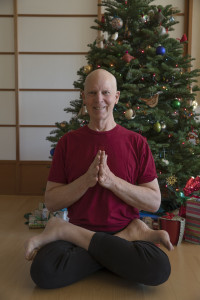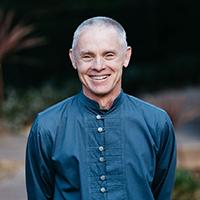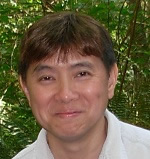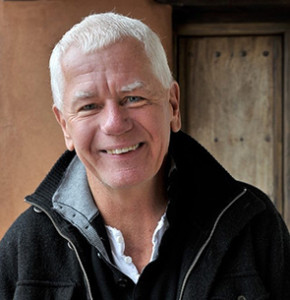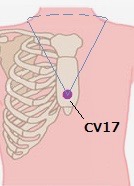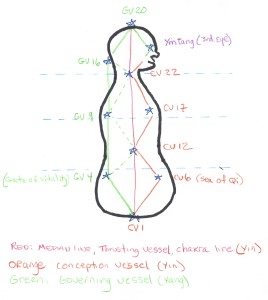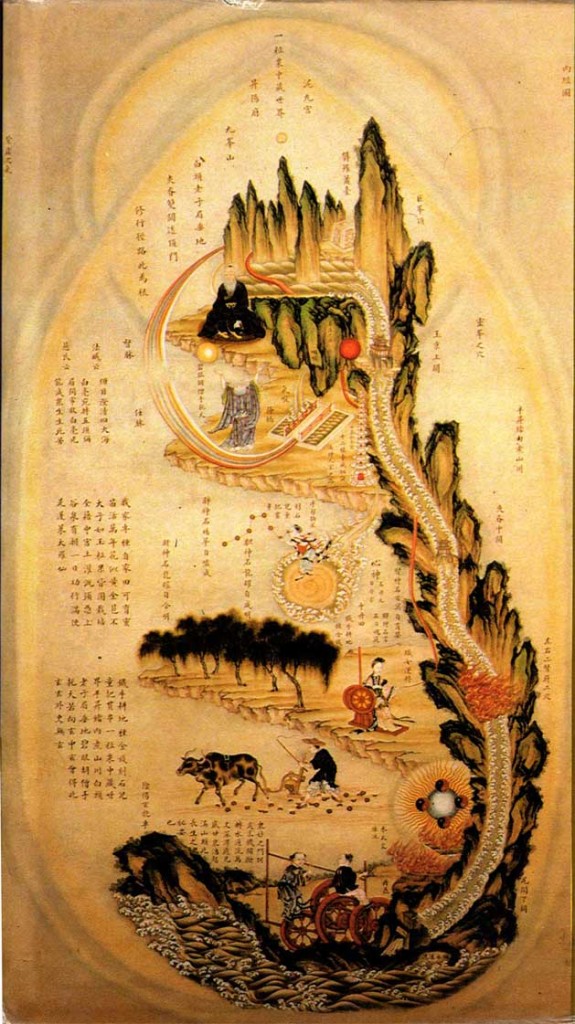What a way to welcome the Vernal Equinox! The Biosphere speaks. How deeply will humans listen to Mother Earth? This is the great question of our historical moment. We knew it would come. Maybe not when or exactly how, but the day of reckoning of human culture with the multi-layered realities of global inter-being has begun, in a major election year, for us Americans, no less.
Words are totally inadequate to describe the immensity of what is happening. I am sending prayers to you all, and all beings, so we all may find inner strength, flexibility, stability and compassion to navigate these turbulent waters. We are all a collective Odysseus on a wild journey through uncharted seas.
One key message from our True Nature, relevant for all, is that we are always Home, and Never Alone. Our True Nature is the heart of the Universe and Ultimate Mystery that gives birth to us all, moment to moment. This is why our meditation practice is so important, so fundamental, to our personal and collective well being. When we begin to realize that meditation is not something we do, but rather the natural embodied expression, in space and time, of our True Nature, there is a major inner shift. We begin to trust our spiritual instinct, the guidance of our soul, to offer wisdom continuously, as needed. We see with wisdom, feel with love and compassion, and act from our awakened intelligence, the buddhi in harmony with the cosmic intelligence, Mahat.
Our True Nature is always and already present, can never be taken away, cannot be given to us by any outside agent or guru. It only awaits our awakening. It is important to note that Self-Realization, (Awakening) is totally different from self-consciousness. In self-consciousness, our self sense, (ahamkara in Sanskrit, from Samkhya philosophy, the foundation of the Yoga Sutras), is hijacked by the ego, whose perspective is limited and separate from wholeness. Self consciousness is constantly turning on itself, spinning laong blindly. This hijacking begins in the first skandha (I highly recommend a review of the series of posts on the skandhas following the linked one, as a map for navigating the mind field in meditation.)
The journey to Self-Realization can be said to involve the tracing of our moment to moment awareness back, from beliefs ideas and concepts, through impulsive reactions, to direct bodily sensation before words appear, before impulse, to skandha 1. Here we begin realizing or recognizing, that all forms/sensations arise out of the Ultimate Mystery of our True Nature. What we encounter in meditation practice is that our ‘attention’ is what has been hi-jacked by the ego, and attention has become addicted to endlessly and uselessly seeking some sense of ground through grasping and avoiding everything and anything that arises. (See the kleshas, PYS II-3 to II-11). When attention truly ‘relaxes’ because it feels safe’, it lets go and Pure Awareness alone remains. Bingo. Recognition — Realization. However, the power of habit is very strong (Hebbs Axiom… all together now …neurons that fire together wire together!), and attention is soon back in the monkey mind of the disfunctional skandhas, running in circles while holding on for dear life.
Navigating the skandhas is not easy, especially in the beginning, but we have some tools that we can use to help us steady the mental ship. The primary tools are what Patanjail calls abhyasa and vairagyam, discipline and dispassion.(PYS I-12 – I-16). These lead to Samyama, or the simultaneous cycling between dharana, dhyana and samadhi. Dharana means to bring our attention to a chosen ‘seed’, which, for our intents and purposes, can be the breath, a mantra, or aspects of the micro-cosmic orbit. Dhyana is to remain there, albeit with some effort or discipline resisting the habit of the attention to wander. Samadhi is when attention becomes effortlessly absorbed in the seed. Time and self sense disappear. This eventually breaks down, the mind again wanders away and the cycle begins again.
It is the nature of the mind to wander. Resisting this reality creates and even busier mind. First and foremost is the need to accept this fact. The first principle in True Meditation, introduced in the last post, is acceptance of what is, moment to moment. This is actually the stance of True Nature, open and non-judgmental, to everything, including the judgmental thoughts that inevitably arise. Letting them be does not mean getting lost in them, feeding them with more energy, or repressing them. This is a stance of stability and equanimity, but it is also the starting point. Our True Nature, always and already is, so we start there.
As yogi-somanauts engaged in an on-going exploration in embodied sensation and intelligence, we can recognize that Samyama leads to ‘sthira sukham asanam’. Our pose of choice, along with our ‘seed’ of choice, (Patanjali refers to this in PYS I-46 as sabija samadhi, or samadhi with a bija/seed), becomes balanced, centered and still. When to pose really stabilizes, we can drop the seed and the pose just is, carrying on like the digestive system, or endocrine system, without any attention, action or effort from us. Here attention can let go, dissolving into awareness. It is a feeling or intuition that allows us to first sense and then land in the Self. Like strengthening a muscle, we can slowly learn to remain landed and grounded. Patanjali describes this in PYS – I-3, tada drashtuh svarupe avasthanam …then True Nature ‘abides stably’ in itself.
In a recent 5 day silent retreat Kate, Sean and I did with Adyashanti, I got to see what this looks like. Adya sat in a chair, nothing fancy, but in watching and feeling his presence during the many meditation sessions, I was moved by the stillness in his body/mind. He is an athlete, for many years training in competitive distance cycling, a rock climber, hiker etc. He embodies the practice of sthira and sukham. Total effortless stillness and radiance. Now he will be the first to tell you that this has come after years of practice, but also that this is available to all who have sincerity and a serious commitment to Awakening.
(A note on the language of Awakening: The following terms are synonymous: True Nature, the Tao, Ground of Being, Presence, The Great Perfection, Buddha Nature, Godhead, Pure Awareness, Brahman/Atman, Drashtuh Svarupe, and more. As Lao T’zu clearly states in the first sentence of the Tao Te Ching, ‘The tao that can be spoken is not the true Tao.’ All of these terms point to what can be directly realized but never adequately explained or described.)
Practice: Meditation
Silence: Find as much outer silence as possible. There will be plenty of inner distractions, so minimize the outer ones. The inner silence is Absolute Silence, that is, independent of any and all movements of the mind. It can be noticed or felt in the beginning, as perhaps a vast spaciousness in which sensations arise. The more you can ‘be still’ in the body/mind, the easier it is to notice what is always and already present. Sthira sukham asanam is a gateway!
Take your seat… aka assume your posture of choice. Restorative poses of all sorts are great for meditation, as well as any of the classical sitting poses. I am sitting in a chair because of my cranky hip and it is wonderful.
Balance the energy by aligning your core line, head to tail, and feeling weight and lightness, heaven and earth sustaining you. Balance front/back and right/left as best possible with the help of the breathing, to find your center, in this moment.
Check in. If there is an inner stillness, just rest there, moment to moment. Even if thoughts or sensations arise, let them be as you rest. Know your Ground of Being is infinite and mysteriously alive. In Tibetan Dzogchen this is called ‘luminous emptiness’. If your attention is wandering, choose a seed.
These seed practices are part of abhyaasa, practices of stabilizing the mind. Abhyaasa and vairagyam, dispassion( essentially not being seduced by your minds neediness) are the first practices Patanjali lists in sutras I-12 – 1-16, as an introduction to samadhi that begins in I-17. Abhyaasa and vairagyam are also the practices given by Krishna to Arjuna in the Bhagavad Gita in Chapter 6, verse 35:
“sribhagavaanuvaaca
asamshyammahabaaho mano durnigraham calam
abhyaasena tu kaunteya vairaagyena ca grhyate”
Sri Bhagavan (Krishna) said:
No doubt, O Mighty-armed (Arjuna the warrior), the agitated mind is very difficult to control.
But, O Son of Kunti (Arjuna), by practice and objectivity, it is mastered.
(From Swami Dayananda’s translation) If you have a copy of the Gita, I highly recommend a re-reading of Chapter 6. It was my intro to the Gita almost 50 years ago and the verses are more alive and relevant than ever to me.
Choosing a Seed:
1.Breathing: Let your attention move to the breathing, allowing it to drop down into the lower belly, the lower dantien, softening and awakening the pelvis, legs and tail. As the breath softens, begin to notice the pauses in the cycle, especially after the exhalation. In this gap, feel or intuit the infinite stillness, ever present and much much deeper inward than the surface movements of the breath. Every breath returns here. Rest when you can, and return to the breath when the attention wanders.
2. Japa: Japa is the silent repetition of a mantra. This sustains the attention while the words clear the mind field. I’ve been using this a lot lately and I’ve found japa is like cleaning the dust and dirt of the windshield of your car. A squirt of window cleaner, a few strokes of the wipers, and you have clear vision again. Repeating the mantra inwardly is powerful. It is helpful if you have recited these out loud and can hear in your inner ear the sound as the sounds of Sanskrit mantras create very specific coherent energetic patterns in the whole body mind. You can find audio files on most of these on line, if they are not famiIiar. I will include some of my favorite mantras below.
Swami Dayananda says is his commentary to Chapter 6, verse 35: “the mental repetition of a given mantra, a meaningful name, word or sentence, is a must and is never given up, even by a sannyaasi.”
3. Mico-cosmic Orbit: We have been exploring various point and circuits from Taoist practice that bring balance and harmony to the human bio-energetic field. Use ones you have found helpful to harness attention, open and relax the body/mind. Build flow, and then step back and feel the results, as in the other seed practices.
As Adyashanti mentions, we can use the seed practices, but eventually we want to spend more and more of our practice time just resting in Presence. Otherwise, the seeds become an another addiction co=opted by the ego, which is really good at doing so! And as Swami Dayananda points out in his commentary to verse 33, chapter 4 of the Gita, ‘Disciplines are only a means, not an end.”
Remember, any pose works, not just sitting, if you can relax into it.
Mantras: (remember ‘ah’ is the heart opening sound. The letter A in all Sanskrit mantras sounds as ‘ah’, as in pahk ya cah in Hahvahd Yahd.
From the Heart Sutra:
Gate, Gate, Paragate, Parasamgate, Bodhi Svahah
“Gone gone totally gone totally gone over the top, wakened mind, So, ah!”
(Allen Ginsberg translation) We did this every morning with Adya. Love it.
Gayatri Mantra: One of the oldest and well known Vedic prayers:
Om bhoor bhuvah svahah
Tat savitur varenyam
Bhargo devasya dhimahi
Dhiyo yonah prachodayat
“OM Absolute Existence, Creator of the three dimensions, we contemplate upon thy divine light. May our intellects be stimulated and knowledge of our True Nature be bestowed upon us.
Purna: from the Upanishads: One of Swami Dayananda’s favorites on non-duality:
Om puurnamadah puurnamidam puurnatpuurnam udacyate
puurnasya puurnamaadaaya puurnamevaa vashisyate
Om shaantih shaanti shaantih
That is fullness ( formlessness), this is fullness (creation)
From that fullness (formlessness) this fullness (creation) has come
When this fullness (creation) is removed from that fullness, fullness alone remains.
The Great Death Conquering Mantra (very relevant for our times) We’ll meet Tryambakam again in our last mantra.
Om tryambakam yajamahe; Sugundhim pushti vardhanam;
Urvarukam iva bandhanan; Mrityor mokshiya mamrutat
We meditate on Shiva as the three eyed one, present in all of us like a fragrance
May we be released from our attachments, like a cucumber drops from the vine.
From Chapter 4, verse 24 of the Gita. This mantra is often used before meals, as the food is an offering. Our poses are also offerings, so this is a good one for any pose.
Brahmaarpanam, brahma havir, brahmaagnau, brahmanaa hutam
Brahmaiva tena gantavyam, brahmakarma samaadhina
The means of offering are Brahman, the offering is Brahman, offered into the fire which is Brahman, to Brahman. Self-Realization is reached by those who see all as Brahman
And finally one given to me by Swami Dayananda, from the Sri Rudram, a series of devotional prayers to the Divine as Shiva.
Om namaste astu bhagavan, vishveshvaraaya, mahaadevaaya, tryambakaaya
tripuraantakaaya, trikaalaagnikaalaaya, kaalaagnirudraaya, niilakanthaaya, mrtyunjayaaya, sarveshvaraaya, sadaashivaaya, shriiman mahaadevaaya namah
Namste to the Divinity, who rules over the universe, the great God, the three eyed one (the third eye of omniscience), destroyer of the demon tripura (who keeps us trapped in the 3 worlds of form), who conquers time like fire destroys past present and future, the one who will eventually consume the whole universe, the blue throated one, the conqueror of death, the ruler of all, the ever auspicious one, salutations.
Use these, or any of your own that work for you.
Practice: Movement: Keep the qi/prana moving freely, whether through yoga vinyasa, qi gong, swimming, dancing, walking, hiking or any other fun way to engage in embodied movement. This becomes moving meditation, or to paraphrase the title of one of Adya’s books, “Emptiness Moving”.
Editorial:
Our embodied link is Gravity, the cosmic expression of love, the mystery glue that binds the universe together. As somanauts, we have a direct link to this integration, through our engaged meditation and movement practices, through our bodies feeling Mother Earth and expanding into the vast spaciousness of creation. When our hearts recognize that they’re the organizing centers that can link Heaven and Earth, we can relax into our own innate openness and stillness, and awaken to the always and already present ‘Ground of Being’.
And remember: spiritual practice is the embodied expression of our True Nature (Ground of Being, aka the Tao), awakening to itself. It is not about trying to get from here to enlightenment, as if enlightenment were somewhere other than here, at some time other than now. In spite of most outer appearances, freedom is right here, right now, already and always.
Personal News: Last round of Chemo was in December, so I am three months out from that. The toll of chemo and radiation and other related stresses of the last 2 years, knocked me back quite a ways and I am still slowly rebuilding my resources/qi. My reserve tank is no longer empty, but a long way from being full again. I just had my 3 month check-in with my oncologist and my labs are good. I was planning to teach in Rochester, Boston and Berkeley this Spring, but with the lock down of the country, that is not going to happen. As soon as possible I will reschedule, but who knows when that will be. Kate is suggesting some Zoom on-line classes, but I am not a modern guy yet. It may come to that though. Sending love to you all. Be strong, stay grounded, be kind, keep up your practice and remember we are always together and connected through the heart channel, Mother Earth and the Cosmos as a whole.


